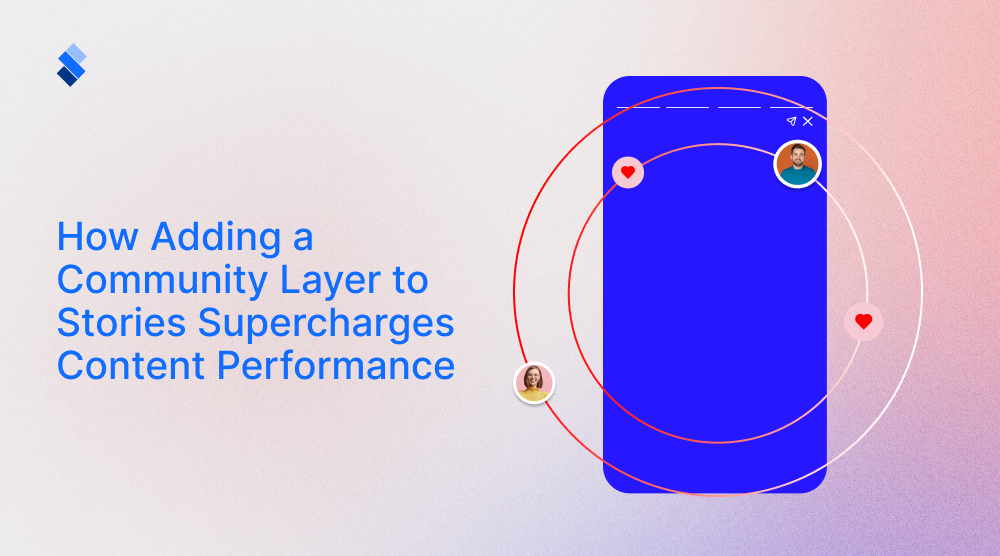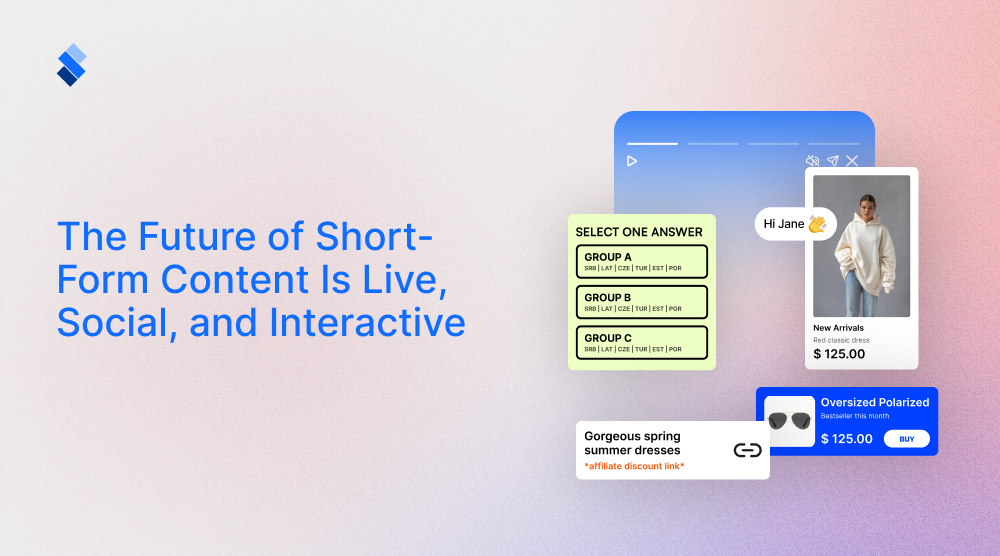How to increase user engagement in app
App designers often struggle with how to increase in app user engagement. Luckily, StorifyMe is here to help.
.jpg)
When people design apps they tend to focus on superficial aspects. Yes, the look, the style, and the flow of your app all do play an important role. As does the branding and overall layout. But, even a top-notch app won't do you much good if your users don't find it engaging. Unfortunately, there is no "one way" to make an app more engaging. There are different ways that may or may not resonate with your audience. So, let's see what those ways are and hopefully find an effective way to help you increase user engagement in app.
Different ways to increase user engagement in app
The main reason why there are many different ways and not a single, golden one, is that different audiences tend to find different aspects more engaging. No app is robust enough to host everything we will going to mention. So, instead of trying to incorporate everything, we would advise you to consider who your target audience is. The better you understand them, the better you will be able to choose the right option for increasing user in-app engagement.
Explain the idea behind your app
One of the ways to increase user engagement in app is to give a brief explanation of what your app is all about. You'd be surprised at how effective this method is, especially with younger generations. Younger people tend to value the idea that is behind a certain functionality. Therefore, they don't only want to focus on what your app does, but also understand why you built it in the first place. You can use in-app stories, animations, or even videos to explain how you came up with your idea, and why it is important to you.
These short explanations tend to help in keeping your app in your users' minds. This makes them far more likely to revisit your app, and recommend it to friends and family. Of course, your app needs to function properly and be in line with the ideas that you've explained. But, if you do manage to keep your explanations in sync with your app, and tackle branding properly, you will see a significant increase in user engagement.
Work on gamification
Gamification is a big subject in app design that has tremendous potential. When done properly, gamification can make your app accessible, fun, and engaging. But, the trouble with gamification is that it is not easy to do. As we've already covered gamification in a previous article, we will only give you a basic idea of what it entails.
In a nutshell, gamification means using design principles from the gaming industry in app design. Game designers work long and hard on figuring out how to catch and maintain people's attention. As they've been at this for decades, they've come up with some interesting solutions on what design choices one should opt for. A lot of these design options can translate to app design. Especially if the person creating the app understands the underlying mechanics. Where people tend to fail with gamification is that they take superficial aspects of game design and clumsily try to shoehorn them into their apps. All in all, gamification can be quite effective as an app design principle. But, only if you fully understand what made them so effective in the first place.

Optimize app onboarding
Another quite important factor in whether or not you'll have good engagement rates is app onboarding. Simply put, app onboarding is the process of learning that your users go through in order to properly use your app. While you may feel that your app is intuitive understand that your users might not find it so. Therefore, it is your job as an app designer to provide your users with an easy way to learn the mechanics of your app, and how to best use it.
When people tackle user onboarding they tend to make one of two mistakes. They either assume that their users are completely inept and then plaster them with needless information. Or, they think that most of the aspects of their app are self-explanatory. Both of these approaches can ruin the user experience. On the one hand, you can overexplain your app, where the users feel frustrated. Or, you can underexplain it where your user feels confused. The goal, as you've likely guessed, is to find the middle ground and provide a good user onboarding process. The best ones are those where the user doesn't even notice that they are being thought.
Integrate with social media
Some apps have a natural connection to social media. For instance, any app that helps modify images should give users an easy way to share their modifications. This is a great example of when app creators understand their app, and how it relates to online space.
Now, does this mean that you should connect every app with all social media? Of course not. A calculator doesn't need to give you ways to share your data. What is important is to recognize how your app relates to different social media. Understand that your app doesn't exist in a bubble. Whether or not you realize it, your app may relate to various social media. And the sooner you recognize this relation, the easier it will be to make use of it.
Introduce competition
Again, this does not work with all apps. But, for those instances where it works, it can be a great way to increase user engagement in app. Namely, we as people can be quite competitive by nature. As such, it can be quite beneficial to introduce competition in your app. If your app has any kind of scoring system, you can bet that your users will want to know whether they are better than their friends. Education and workout apps are great examples where a bit of competition can do a world of good. Not only will your users want to use your app more in order to increase their scores. But, they will often visit your app just to check on their competition. Again, you shouldn't shoehorn competition in an app where it doesn't belong. But, when it does, it does wonders.

Use loyalty systems
Loyalty systems are another great way to boost user engagement. In fact, they are the most straightforward ones. Essentially what you are doing is providing rewards for people who engage with your app. The more they engage with it, the more rewards they get. As you've probably used an app that provides a loyalty system so far (think of shopping apps) you probably know how effective they are in both drawing people in and keeping them engaged. The main problem is finding a loyalty system that is both enticing to users, but now too costly for the owner. This is why you need to research different loyalty systems and make careful calculations on which one would be most beneficial.
Work on re-engagement
One of the main reasons why apps have poor engagement rates is not they are poorly designed, or that they don't find new customers. A big factor is whether or not they are able to convince users to re-engage with them.
By default, users' attention span is surprisingly short. They might find your app quite interesting at first use. But, they are also quite likely to find a new one soon, and simply forget about yours. To avoid this common pitfall, you need to work on user re-engagement. This is mostly done through app notifications. A well-crafted notification system will push the right message at the right time. The right message entails that you know what your customers are like and what their most likely motivation is for using your app. The right time entails that all apps have specific periods when customers use them. Reminding the user about your app during this period is most likely to yield results. Therefore, know that app notifications aren't a simple matter. And that you need to understand your crowd in order to properly address them.
You can work on re-engagement even outside the framework of an app. Web stories can do wonders for user retention, especially if you have an active social media profile. So, try to think carefully about when and where to engage users.
Show that user input matters
The last method of improving user engagement rates, which we'll mention, is taking into account user input. Namely, it is important for app designers to have an unobstructed channel of communication with users. Through it, your users should let you know about their impressions of your app, and whether you should change something. While you may want to only find praise on this channel, you should instead focus on the user's criticism and suggestions. More often than not they will give you valuable pointers on how to make your app better. By following them you will not improve your app, but also make your users feel appreciated. Both of these stand to improve in-app engagement rates. Therefore, it is well worth your time to hear out what the users have to say.
Final thoughts
Once again, it is important that you understand both your audience and your app if you wish to increase user engagement in app. Where most apps fail is when they use methods that are not suited for them. So, we would advise you to consider what your app is like, and which of the methods we've mentioned seems most likely to work. It is much better that you focus on a single method and implement it properly, they try and implement multiple without proper care.







